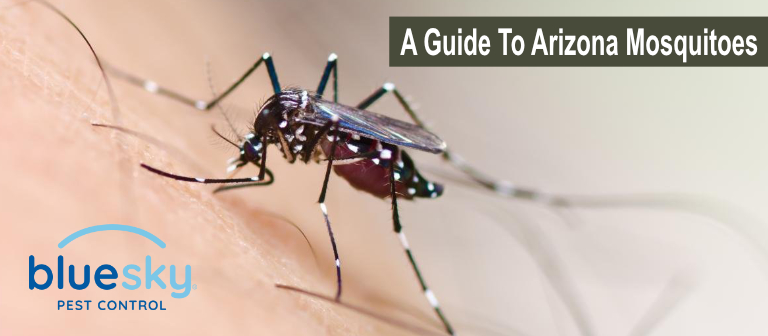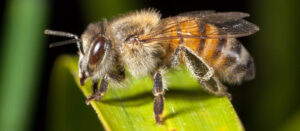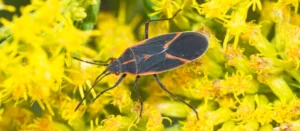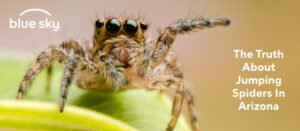$50 OFF New Residential Customers. Learn more
A Guide to Mosquitoes in Arizona

In Arizona, mosquitoes are thought of as a nuisance. Worldwide, mosquitoes are known as the number one cause of death, killing hundreds of thousands of people annually. Thankfully, in Arizona, mosquitoes don’t have the same impact as they do in third-world countries, but they do have the potential to carry diseases like Yellow Fever, St. Louis Encephalitis, West Nile, and Dengue.
In the Phoenix metropolitan area, the Maricopa County Environment Services Department does a good job suppressing mosquito populations from a macro perspective. However, the best way to protect your home and family is to seek the help of a professional pest control company with a proven mosquito control program.
In this article, we’ll discuss the different types of mosquitoes in Arizona, when they are most active, and how to protect yourself from becoming a mosquito’s next meal. We have locations in Phoenix and Gilbert while serving the entire area including Mesa, Chandler, Scottsdale, and Queen Creek! Contact us for a free quote!
Are There Mosquitoes in Arizona?
Even though Arizona has a very dry climate, mosquitoes are widespread throughout the state. A good portion of the state has either a semi-arid climate or an arid-humid climate. While some would conclude the scorching temperatures would deter the flying pests, mosquitoes survive and even thrive in the heat, assuming a water source is nearby.
Seasonal weather patterns contribute to increased mosquito activity. The monsoon season, lasting from June to September, produces heavy rain. Large amounts of water in conjunction with the hot temperatures and humidity make for the perfect mosquito breeding habitat.
Types of Mosquitoes in Arizona
There are more than 40 different species of mosquitoes in the state of Arizona. Fortunately, only a handful of them are disease spreaders. We’ve compiled a list of the most common species of mosquitoes in Arizona below:
Western Encephalitis Mosquito
You may often hear this mosquito referred to as the Culex mosquito (Culex tarsalis). Because they are particularly fond of human habitats, Culex species mosquitoes are also known as “house mosquitoes”. They carry diseases like West Nile and can be carriers of St. Louis encephalitis or western encephalitis. These mosquitoes are often referred to as “gentle night biters” as people often don’t notice they’ve been bitten until it starts to itch sometime after the mosquito has flown away.
Southern House Mosquito
Another Culex species, the Southern house mosquito (Culex quinquefasciatus) is most active at night. Females feed on the blood of humans and other mammals. They carry pathogens that cause West Nile and encephalitis. Common breeding grounds include stagnant water sources, like old tires bird baths, and low points in landscaping.
Yellow Fever Mosquito
The yellow fever mosquito (Aedes aegypti) is quite possibly the most widespread species across the world. This means you can certainly find them in Arizona. The yellow fever mosquito carries organisms that cause diseases such as yellow fever, dengue, and Zika, among others. These are day-active mosquitoes that are aggressive biters, especially at dusk and dawn.
Western Malaria Mosquito
This species of mosquito (Anopheles freeborni) is commonly found across the western United States and Canada. This is the local vector for malaria, the deadliest vector-borne disease of humans worldwide. They are easy to identify by their yellow hairs and brown stripes on their thorax. There are very few deaths in Arizona caused by Malaria, however, these mosquitoes have been known to cause some pretty serious outbreaks in the early 20th century.
Inland Floodwater Mosquito
This species of mosquito (Aedes vexans) is unusual due to being able to produce several clutches of offspring each season. Adults generally live 3-6 weeks, sometimes making it all the way to 3 months. The long lifespan gives plenty of time to lay several broods of eggs. Inland floodwater mosquitoes are active in the evening with activity peaking about an hour after sunset. These mosquitoes are very common in Arizona. The name vexans is from Latin meaning annoying or vexing which is fitting; being a very aggressive biter. This species can transmit West Nile as well as dog heartworm, among others.
When is Mosquito Season in Arizona?
These annoying pests are most abundant during the hot summer months through early fall. However, most parts of Arizona have mosquitoes year-round due to temperatures failing to stay cold enough for a long enough period of time. While the highest elevations in Arizona don’t necessarily have mosquitoes all year, larvae that spend the winter in frozen ponds can reactivate when days turn warmer and cause an unseasonal hatch.
What Do Mosquitoes Eat?
Other than human blood, people often wonder what mosquitoes eat. Adult mosquitoes typically feed on nectar from flowers or find other sources of sugar. Females are the only mosquitoes that actually feed on blood. They need the nutrients from the blood for their eggs to develop and grow. Females attack when they breed and are looking for a blood meal.
How to Protect Yourself from Mosquitoes in Arizona?
Your backyard is your sanctuary, an extension of your living space. It’s a place to relax and spend time with family and friends, unwind, and let the kids play. When you have a problem with mosquitoes eating you alive, no one wants to step foot outside. That’s why it’s so important to keep your property a mosquito-free zone.
The first thing you can focus on to protect your home from mosquitoes is standing water. Moist areas near your home lead to increased mosquito populations.
Below is a complete list of suggestions that will help stop mosquitoes from taking over your Arizona yard:
- Fix leaking faucets.
- Get rid of all stagnant water in and around your home. Empty standing water from flowerpots, pool covers, containers, and buckets.
- Seal off any potential entry places for mosquitoes and be sure your window and door screens don’t have any tears or holes.
- Cover trash bins and other open containers. These are perfect places for mosquitoes to hide.
- Thoroughly clean your gutters. When clogged with leaves and debris, stagnant water accumulates and can become a breeding ground.
- Use insect repellent when spending time outdoors. Those with at least 30% DEET will provide longer-lasting protection.
- Utilize mosquito candles.
Tips for Mosquito Control in Arizona
Unfortunately, preventative measures just aren’t enough to keep up with the rapid rates at which mosquitoes repopulate. In addition to following the steps mentioned above, you’ll get the best long-term results by hiring a local professional pest control company to help with your mosquito problem.
The Mosquitoes in Arizona Guide Conclusion
We have plenty of mosquito species in Arizona. Having them buzzing around when you’re trying to enjoy time outdoors with friends and family is no fun. Taking the proper preventative steps can decrease the opportunity for mosquito populations. And a proven mosquito control program from a trusted, local pest control company can help take back your yard and reduce the risk of mosquito-related disease.
Whether you’re dealing with mosquitoes in Phoenix or scorpions in Gilbert, our expertise and experience will help solve your pest problems.
Related Posts

Killer Bees in Arizona? Understanding Africanized Bees and How to Coexist Safely
You’ve likely heard the term “killer bees” used to describe Africanized bees in Arizona, but did you know this nickname…

Red & Black Intruders: Meet Arizona’s Boxelder Bugs
Boxelder Bugs in Arizona If you’ve ever stepped outside and spotted a cluster of black-and-red bugs crawling on your porch…

Jumping Spiders in Arizona: Harmless or Hazardous?
Jumping spiders in Arizona might be small, but they can certainly give you a big surprise when they suddenly appear…